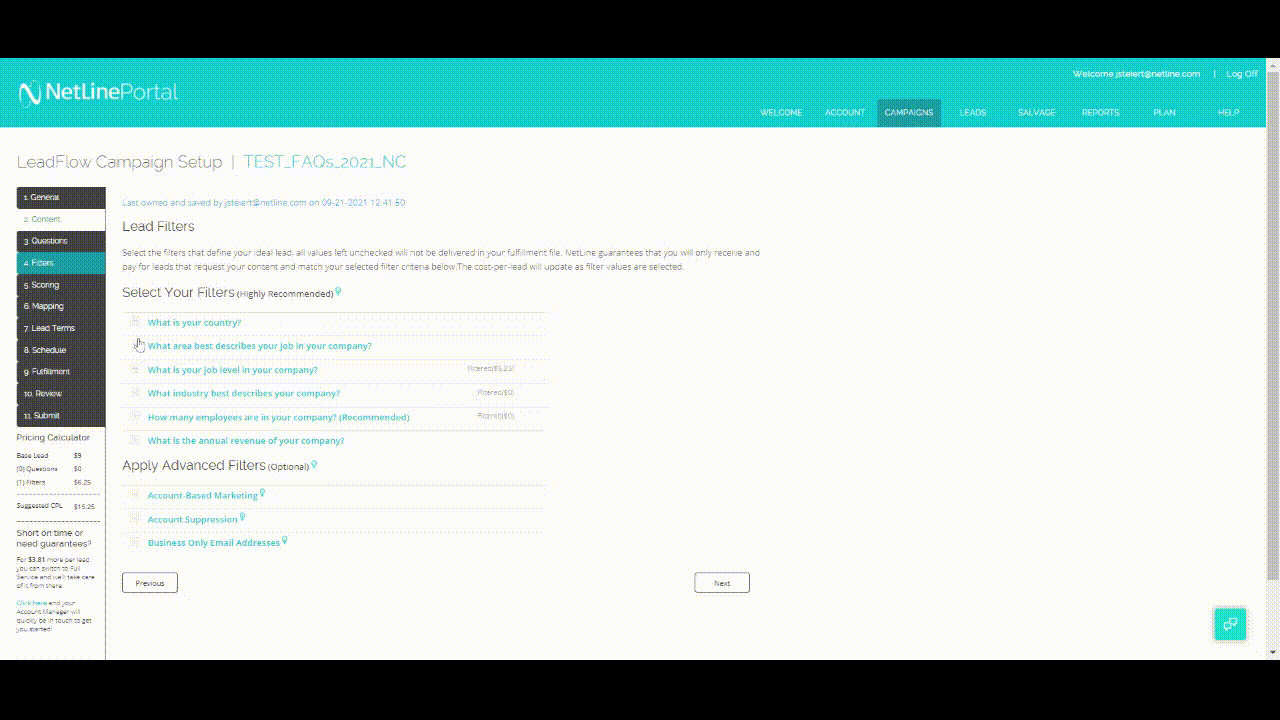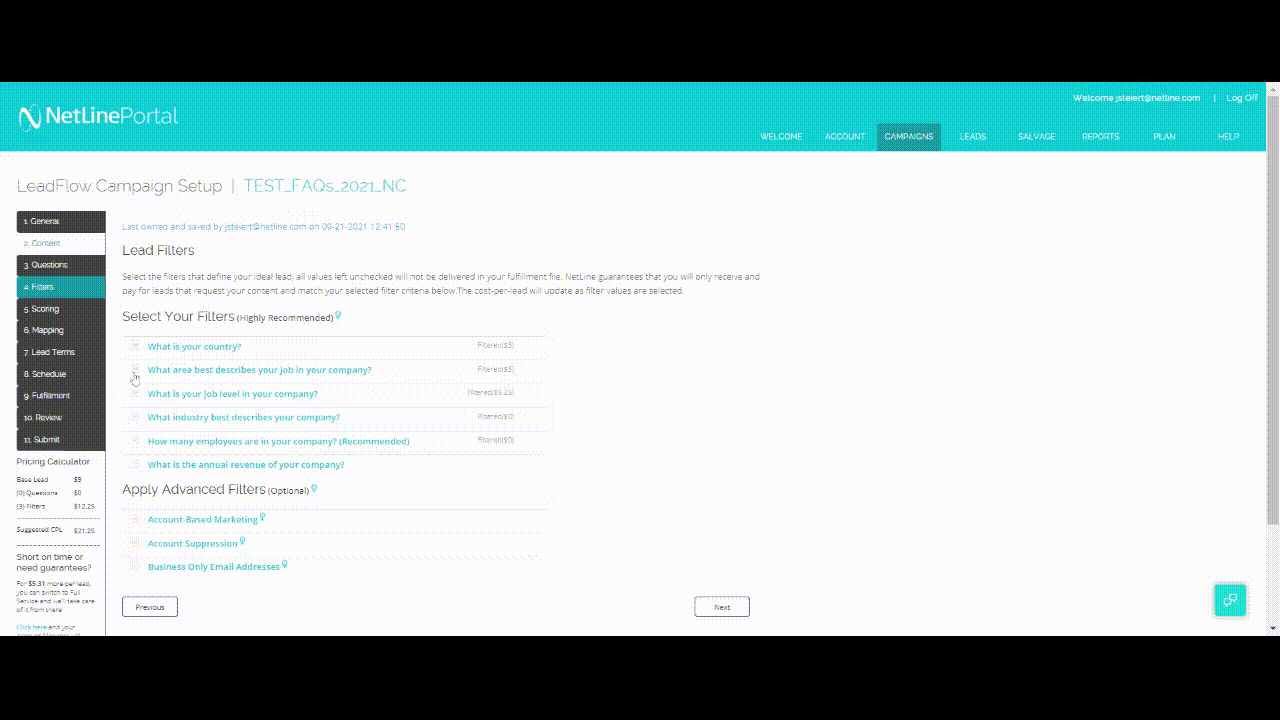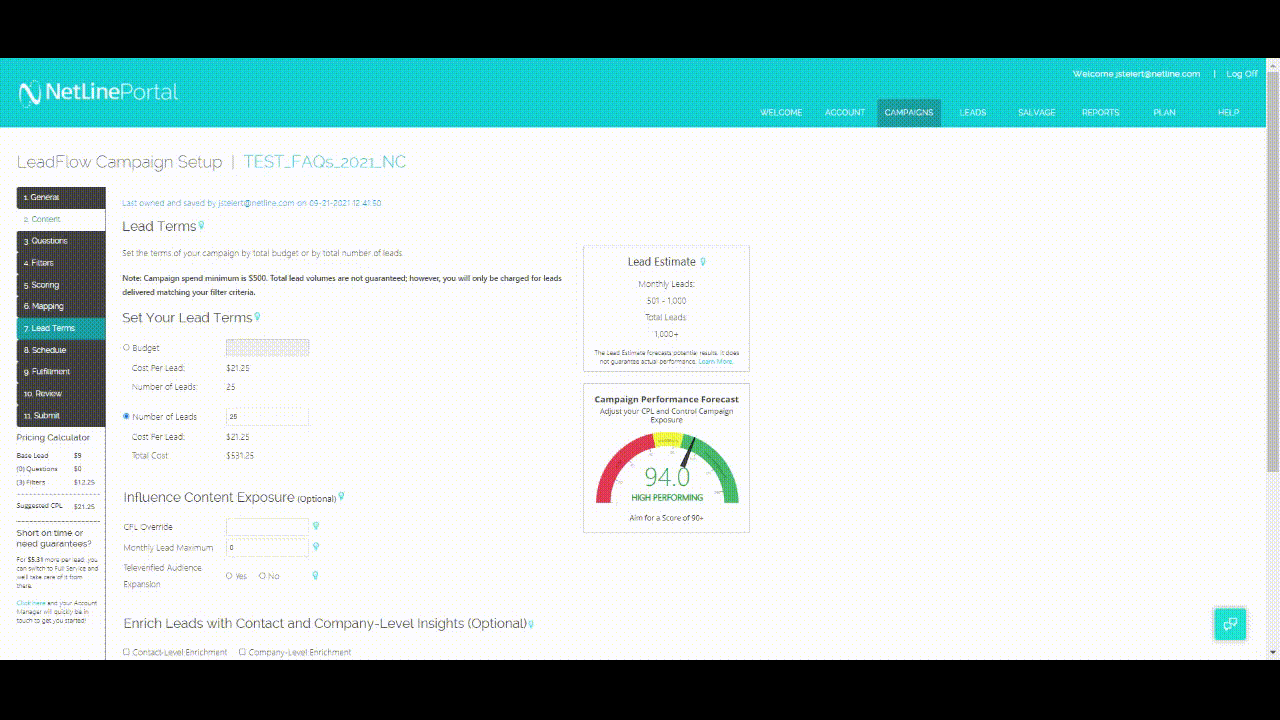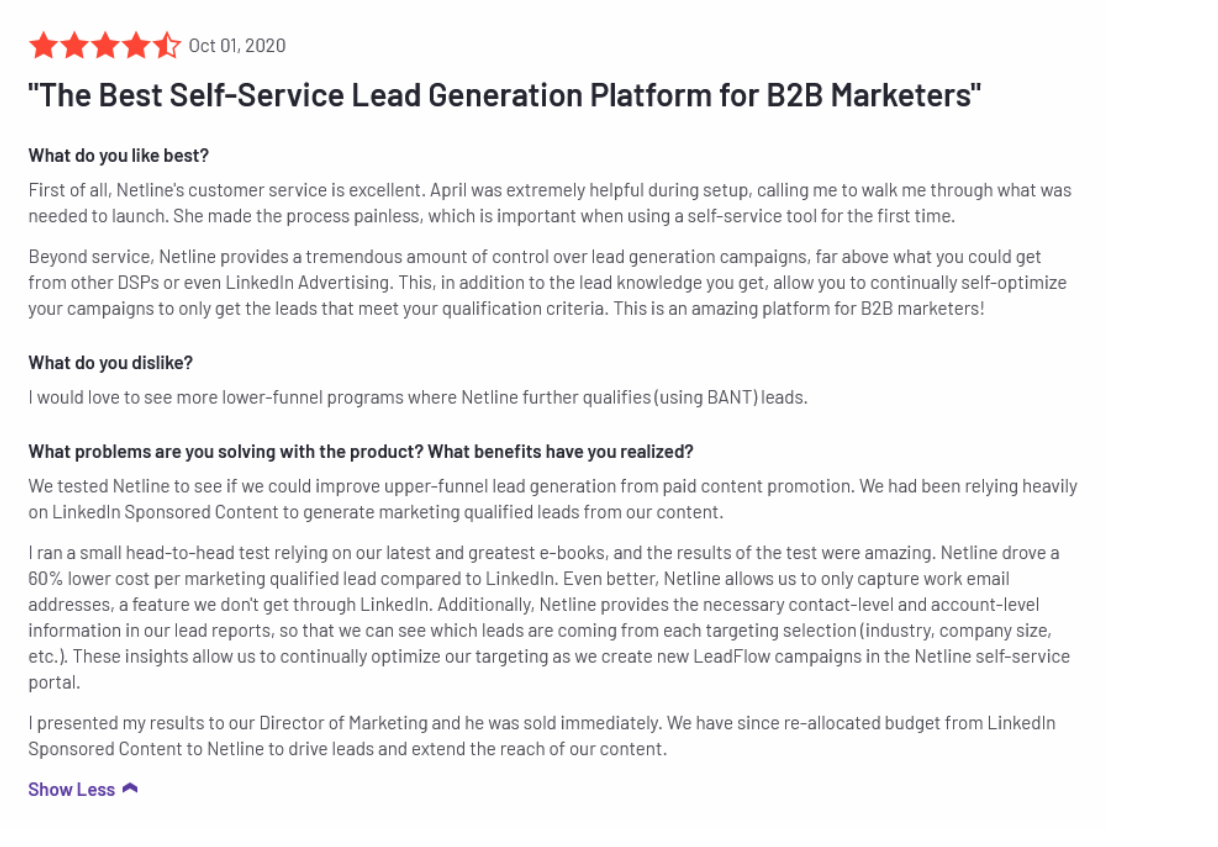Earlier this year, NetLine introduced the open lead gen marketplace—the first and only real-time bidding marketplace where Marketers can purchase B2B leads on their own terms.
Beyond wanting to make sure that B2B Marketers from all sizes of organizations and sales cycles of varied lengths had access to the most engaged B2B first-party audience population on the web, we also want to provide our clients with every opportunity to get their campaigns to market as quickly as possible.
This includes answering some of the frequently asked questions about Lead Gen, including knowing exactly how the Marketplace works, how it compares to other competitors, and any specifications your content needs in order to launch your campaign.
Why Did NetLine Create the Open Lead Gen Marketplace?
One of NetLine’s goals as a company is to Democratize Lead Gen for All. Our Chief Strategy Officer, David Fortino, said as much following the release of the product.
Historically, every B2B vendor in the landscape, including NetLine, had charged a fixed price to B2B Marketers based upon specific filters that aligned with their ideal customer persona values. Whether you were an enterprise technology company or a startup with multi-billion dollar valuation aspirations, you were charged the same exact rate for the same type of audience member as they registered for your content.
Although auction-based pricing has never been used by B2B lead gen vendors prior to NetLine, (Marketers have been using similar features from Google, LinkedIn, Facebook, and every other programmatic ad platform for more than a decade), for some reason, B2B lead gen had been stuck in this fixed market dynamic.
The Open Lead Gen Marketplace aims to change that and, technically, has changed it.
How Does the Open Lead Gen Marketplace Work?
Simply put, NetLine’s Open Lead Gen Marketplace allows B2B Marketers to manage their lead generation goals on their own terms in real-time. For the first time, a B2B Marketer can structure a content-centric lead gen campaign with their own pricing economics taking center stage.
As our Chief Strategy Officer, David Fortino, said when we launched the Marketplace, this self-service model has, “made B2B lead acquisition more efficient, more cost-effective, and easier than it ever has been.” All of this aligns with NetLine’s goal of Democratizing Lead Gen for all.
Targeting
To best demonstrate how the Marketplace works is to walk you through a sample campaign build.
For this exercise, let’s say we’re targeting professionals in the US with a job function focused on those working in the Banking/Mortgage, Business, and Finance/Accounting fields. We’ll also focus on Manager and above (C-Level, Executive VP, Senior VP, VP, Senior Director, Director, Senior Manager, Manager) for the Job Level filters.
Now we can skip ahead to lead terms. You’ll notice here that there is a cool little optimization tip. In this case, it recognized that the campaign has excluded specific filters that would seemingly match the filters we’ve already selected. Let’s accept that recommendation and add it to our filters.
With your filters chosen, you’ll now see a lead estimate generated for your campaign. At the same time, the performance forecast will also be dynamically generated based upon the viability of the campaign against the filters and known audience populations.
With all of these variables in place, the Suggested CPL is $21.25 CPL. This is where the Open Lead Gen Marketplace gets to flex its muscle: Through dynamic pricing and the CPL Override.
Let’s say, as the Marketer running this campaign, you know that the average selling point of your product is low compared to other products on the market and I need exceptionally high conversion rates in order to support more content-centric lead gen initiatives, the default CPL may not be viable. Historically, this would have been where a company would have walked from running a campaign with NetLine because the math just didn’t make sense.
With dynamic pricing, you could drop your CPL to $15 within the CPL Override field seen below. While the performance forecast drops below the suggested score threshold, if this is within your budget, this represents a new opportunity for your business or your client.
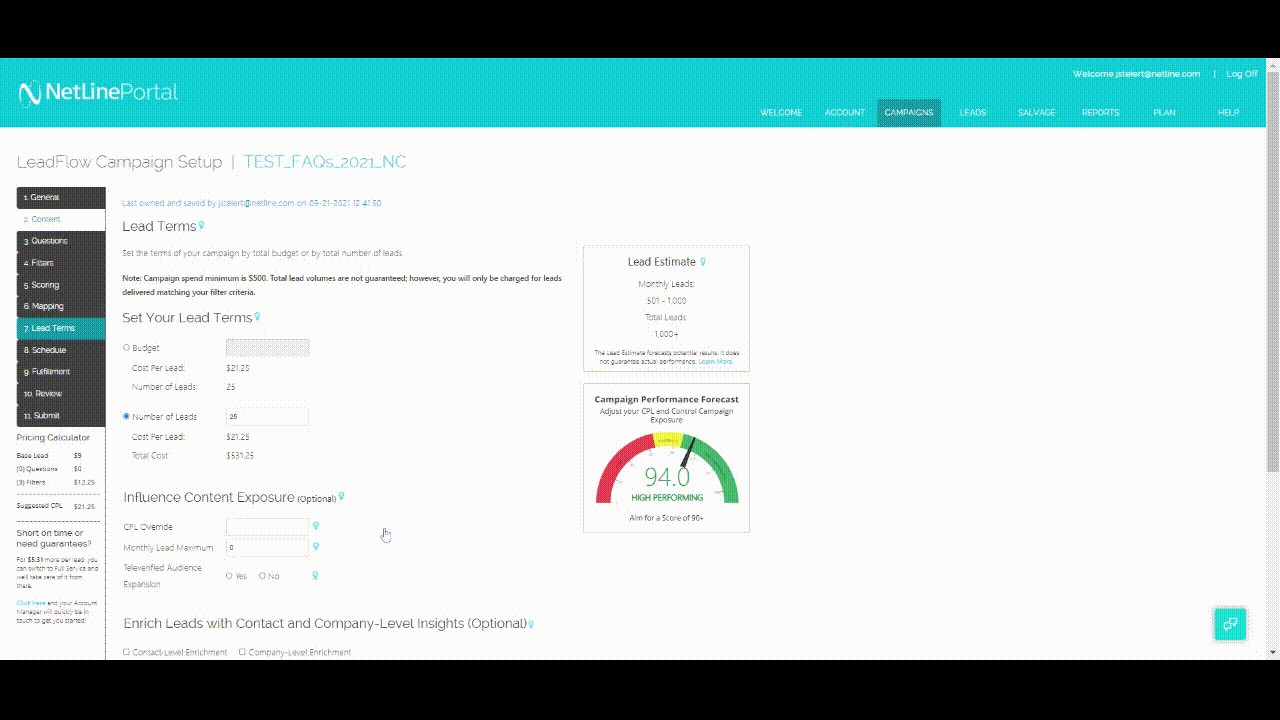 Conversely, if your product or service was more expensive relative to some of the other options in the market or you simply wanted to command a greater share of voice, your CPL threshold will likely be greater. Just to show how much more impactful a higher CPL would be, we increased the Override to $35 and ended up with a performance forecast of 149.
Conversely, if your product or service was more expensive relative to some of the other options in the market or you simply wanted to command a greater share of voice, your CPL threshold will likely be greater. Just to show how much more impactful a higher CPL would be, we increased the Override to $35 and ended up with a performance forecast of 149.
The Marketplace is all about flexibility and allowing Marketers to control more of their own success on their terms. This is something that the market as a whole beyond Netline, has really conditioned today’s modern B2B Marketer to expect and we are happy to meet Marketers where they should be met.
How Does the Open Lead Gen Marketplace Compare to LinkedIn?
As you would expect, there are a number of differences between these two platforms.
Let’s break down each platform to see how they compare and contrast.
Usage
At the core, each platform was developed to deliver leads to Marketers. NetLine is a B2B-exclusive platform while LinkedIn is open to businesses selling directly to consumers, as well.
Beyond having a focus on generating leads, LinkedIn’s Marketing Solutions platform allows Marketers to create campaigns with a variety of objectives, including brand awareness, video and website views, and the ability to promote career opportunities. The Open Lead Gen Marketplace is designed to do one thing and one thing only: Generate First-Party and Fully Permissioned B2B leads.
Targeting
Targeting is one of the most scrutinized parts of any B2B Marketing platform.
LinkedIn’s Ad Targeting homepage describes its targeting capabilities as integrating your campaign’s, “targeting criteria to build your ideal persona.” NetLine’s Open Lead Gen Marketplace delivers audiences that allow you to target your ideal person.
As we described in our answer to How Does the Open Lead Gen Marketplace Work?, B2B marketers can launch content-centric lead generation campaigns on a performance basis (CPL) within a self-service and thriving marketplace. In a matter of a few minutes, turn their content and attributable business outcomes beyond ToFu KPIs and traffic generation values. While LinkedIn’s platform might deliver your content to a similar audience, the Open Lead Gen Marketplace has a much greater likelihood of acquiring B2B leads from professionals who are truly interested in your product or service.
Data
For as much attention that LinkedIn gets within the B2B advertising ecosystem, when it comes down to extracting data from their audience, the advertiser is more than likely to receive a predominant supply of personal contact information. This tends to be a HUGE hurdle for Sales organizations to conceptually embrace as they tend to place very little value towards a free email address and/or personal phone number.
When you consider for a moment that the vast majority of LinkedIn’s audience still views it as nothing more than an online resume, this harsh reality isn’t all that difficult to understand.
Pricing
Consider the fact that LinkedIn never once attempts to absorb risk and exclusively relies on a mixture of CPC and/or CPM-oriented pricing models. Comically, they love charging you for all those meaningless vanity metrics like clicks and views all while masking that reality behind a message of lead generation.
In the case of content syndication lead generation, you also receive earned media exposure throughout the duration of the campaign that you don’t pay for (in contrast to a CPM campaign). And in the case of CPL pricing, you are paying for leads which is directly aligned with your lead generation goals. (1+1=2).
“The simplest explanation is usually the best one.”
Effectiveness
It’s common knowledge that display-oriented channels are rife with poor metrics, banner blocking, browser removal, and general distrust by audiences. Yet here we are: B2B Marketers continue tossing budgets against traffic-oriented initiatives and hoping for the best. This is especially true for those B2B marketers heavily invested in ABM platforms. Whether selecting LinkedIn’s CPC or CPM model pricing model, both have their drawbacks:
- Most CPM budgets will be spent on audiences that never react. Only 0.04%[1] of people that see a banner will click on it. Putting that another way, Marketers are knowingly wasting 99.96% of their budget.
- If using a CPC budget, the vast majority of the CPC budget will be allocated towards sending traffic to a landing page where a lead gen-oriented CTA and form will be presented. Sadly, only 2.35%[2] of the people that arrive at the lead gen landing page will convert into an actual lead. Putting that another way, Marketers are knowingly pouring 97.65% of their budget down the drain.
For these reasons, NetLine has always been focused on one specific outcome for B2B Marketers: High-quality, first-party leads exclusively controlled by a CPL model. By only paying for the leads that meet your exacting criteria, our clients keep the performance of our platform accountable, making it the most attractive option for B2B Content Marketers to generate leads.
While LinkedIn may have the advantage in its utility, the Open Lead Gen Marketplace has the edge when it comes to following through on its promise of delivering quality, first-party B2B leads.
Customer Perspective
Speaking of LinkedIn, we’d like to share Nathan Huet’s story with you and how he got to know NetLine and the power of a CPL-based model.
Formerly DocASAP’s Senior Marketing Manager, Nathan is a data-focused Marketer fixated on driving key objectives and results from his lead gen campaigns. As such, he used many different vendors to try and fulfill the demand needs for DocASAP. During Nathan’s time at DocASAP, NetLine outperformed LinkedIn.
“NetLine provides a tremendous amount of control over lead generation campaigns,” Nathan said, “far above what you could get from other DSPs or even LinkedIn Advertising. This, in addition to the lead knowledge you get, allows you to continually self-optimize your campaigns to only get the leads that meet your qualification criteria.”
“[In the past, we] had been relying heavily on LinkedIn Sponsored Content to generate marketing qualified leads from our content. I ran a small head-to-head test relying on our latest and greatest eBooks, and the results of the test were amazing. Netline drove a 60% lower cost per marketing qualified lead compared to LinkedIn.”
After presenting these results to his Director of Marketing, DocASAP re-allocated budget from LinkedIn Sponsored Content to NetLine, where they’ve been driving leads and further extending the reach of their content ever since.
More NetLine Auction FAQs
We’ll continue to add more FAQs to this blog as time goes along. If you have any questions in the meantime, please reach out to portal-support@netline.com or use our Drift bot to chat with one of our experts.

